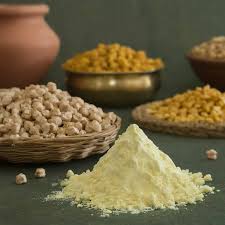
HEALTH EFFECTS OF AUBERGINE
Health effects of aubergine. The aubergine is a member of the nightshade plant family, which also includes tomatoes, potatoes, and bell peppers. In fact, aubergines resemble tomatoes in that they grow from the vines of a plant that can reach a height of several feet. They have a deep purple, glossy skin that envelops cream-colored, sponge-like flesh that is dotted with tiny, edible seeds.
HEALTH EFFECTS OF AUBERGINE
In addition to the traditional purple variety, aubergines come in a variety of colors, including lavender, jade green, orange, and yellow, as well as a wide range of shapes and sizes. The most common aubergine variety resembles a large, pear-shaped egg, which is why it is called “eggplant” in the United States.
1. Antioxidant source

nasunin, which gives aubergines their rich purple skin, is one of the antioxidant-rich defensive chemicals found in aubergines. It has been discovered that this plant component protects the fats that comprise the membranes of brain cells. These cells’ membranes are responsible for letting nutrients in and waste products out as well as receiving signals from messenger molecules that tell the cell what to do.
2. assist in controlling blood sugar levels
Aubergines are a good addition for those with type-2 diabetes since they are low in fat and sugar and a good source of fiber. Actually, according to test tube research, eggplant extracts may help regulate the absorption of glucose, which could make them useful for treating type-2 diabetes and lowering the high blood pressure that goes along with it.
3. assist in controlling cholesterol levels

According to certain research on animals, eating aubergine may help reduce low-density lipoprotein cholesterol, or “bad” cholesterol. These effects are most likely caused by the fiber and antioxidants, such as nasunin, found in aubergine.
4. aid with weight management

Because it is low in calories and high in fiber, aubergine is a great addition to any weight-loss plan. In a variety of dishes, it can be effectively substituted for more calorically dense choices. Furthermore, aubergine’s plant chemicals seem to prevent pancreatic lipase from doing its job, which could prevent fat from being digested.
5. promote heart health

Nasunin, a healthy substance, helps dilate blood vessels by triggering nitric oxide, which is then strengthened by chlorogenic acid, another substance found in aubergine skin, to further reduce blood pressure. Furthermore, the pulp of certain aubergines, particularly white eggplant, contains substances that function as ACE inhibitors. In other words, they prevent the angiotensin-converting enzyme, which is essential for controlling blood pressure, from doing its job.
Summary
Although they do contain oxalates, aubergines do not contribute much when compared to other fruits and vegetables. However, some people who have a history of kidney stones that include oxalate could decide not to eat too many of them or, at the very least, to use cooking techniques like boiling that lower levels. Most reactions are moderate, but in rare instances, an allergy may develop. Only a few instances, nevertheless, have resulted in anaphylaxis.

 Travel4 weeks ago
Travel4 weeks ago
 Health2 weeks ago
Health2 weeks ago
 Health3 weeks ago
Health3 weeks ago
 Health3 weeks ago
Health3 weeks ago






















